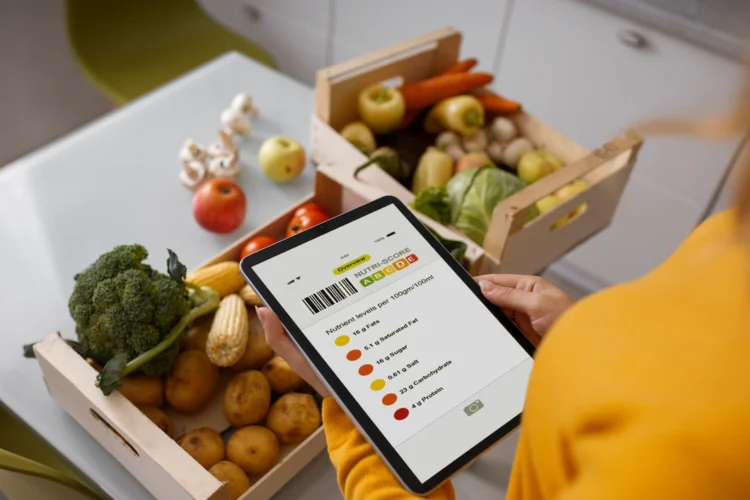It’s important to keep track of what you’re eating and how much you’re eating.
However, sometimes it can be hard to monitor our intake.
In this article, we will provide some tips on how to watch your food intake in a way that will help you lose weight efficiently.
When trying to lose weight, it is important to pay attention to what you are eating and drink.
Counting calories and tracking macros can be very helpful in reaching your goals.
However, there are other ways of watching your intake as well.
Pay attention to how much time you spend eating each day, the types of foods that you consume, and how many snacks you eat.
This way, by doing diet analysis you can make sure that you are taking in the right amount of nutrients and calories needed for weight loss.
By following these guidelines, you will be able to achieve your weight loss goals more efficiently. Keeping track of your intake is essential in helping you stay on track and reach your desired outcome.
When planning out your meals, it is very important to track what you are eating. By tracking your food intake, you will be better able to understand the nutritional information of the foods that you are consuming.
This can help you make informed choices about the foods that you eat and also help increase your overall nutritional health. The following five tips will help you track your food intake:
1. Keep a food diary

Food diaries are a great way for individuals to track their food intake over a period of time.
By writing down what each individual ate, they can find out more about the different nutrients and vitamins that they are taking in.
Food diaries can also be used as a tool for weight control or for monitoring disease markers.
Keeping a food diary is an important part of any successful weight loss program.
Not only will it help to monitor what you are eating, but it will also help to identify which foods make you feel energetic and balanced.
If you want to achieve lasting success with your diet, it’s important to write down all the food that you eat.
By writing down what you ate and how you felt after eating it, you’ll be able to make informed decisions about which foods are best for your body.
2. Use nutrition tracking software

There are many different nutrition-tracking software applications that offer customizable tools and data visualization.
This can help individuals to better understand their dietary habits and analyze their nutritional data in a more comprehensive manner.
How do you know if you’re following your nutrition guidelines? Maybe you don’t have the time or inclination to track everything yourself but would like to see the results of your efforts.
Or maybe you’re intimidated by tracking software, feeling like it’s too complicated or time-consuming.
There are plenty of great options out there, some more simple and user-friendly than others.
3. Record the date, time, and location of every meal

It is important to document every single meal that you eat in order to track where the food came from and when it was eaten.
This information can be used to determine if any dietary changes need to be made and also pinpoint any nutritional deficiencies that may exist within your diet.
This is an efficient way to monitor your diet and stay on the right way with your weight loss journey.
By recording the date, time, and location of every meal, you can ensure that you’re getting all the nutrients that you need.
Additionally, food diaries can help identify unhealthy eating habits.
By taking note of what foods tempt you most and how much they weigh, you can start to change your eating habits for the better.
4. Compare your data with friends

By comparing your data against those of friends or family members, you can get an idea of where some of your nutrient deficiencies may exist.
This can help identify possible causes such as poor nutrition or lack of exercise, which then allows for proactive measures to be taken towards improving your health condition.
5. Track macronutrient levels

Another valuable tool that could be used in conjunction with food tracking is macronutrient level analysis.
This method can help individuals determine how well they are eating based on their intake of protein, carbohydrates, and fats.
Are you struggling to stay on track with your eating habits? Maybe you’ve been meaning to try a lower-carb diet, but you can’t seem to stick to it.
Or maybe you’re overeating at night because you’re not getting enough nutrients during the day.
Whatever your food problem areas may be, fixing them can make all the difference when it comes to weight loss. Eating healthy is an important part of losing weight, but it’s not always easy.
Sometimes we can get derailed by our cravings or our environment. It’s important to take a step back and examine what might be causing your struggles.
Once you know where your problems lie, it will be easier to address them.
Fixing your food problem areas is essential for success when it comes to weight loss.
If you can identify and fix the issues behind your eating habits, you’ll be able to see significant improvements in your weight and body composition.
Keep in mind that there are many different ways to approach weight loss, so don’t feel limited by the following tips.

Instead, use them as a starting point for finding an individualized plan that works best for you.
Distractions are a common problem when it comes to following a diet. Between work, school, and family, it can be hard to find time to track what you eat.
However, if you can find a way to keep up with your tracking, you’re on your way to weight loss success.
There are many different ways to track your food intake, so find one that works best for you.
Before starting tracking, make a list of the foods that you eat the most often and categorize them by type.
This will help you determine your problem areas. Once you know what foods are contributing to your weight gain or obesity, make changes to those habits!
Be patient with yourself, losing weight is a process that takes time and dedication.
Remember, tracking your food is only one part of the war against obesity. Make sure to exercise as well, as this will help you burn off calories and reduce unwanted body fat.







